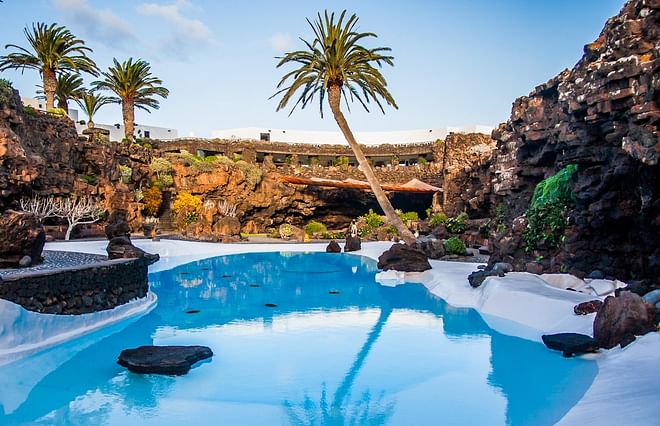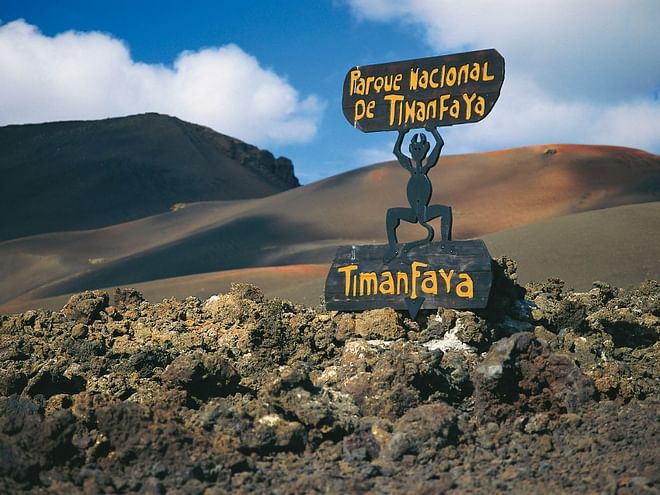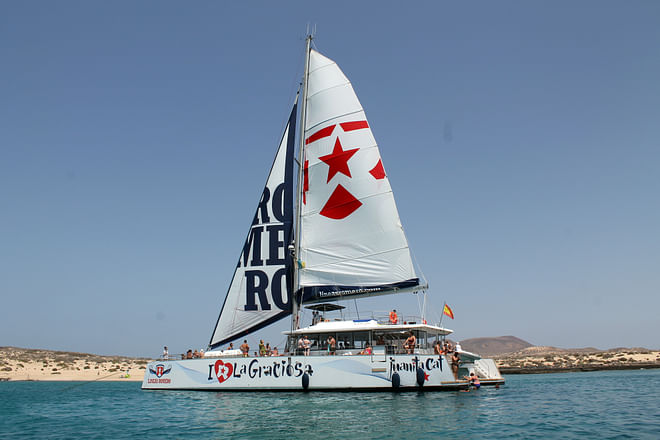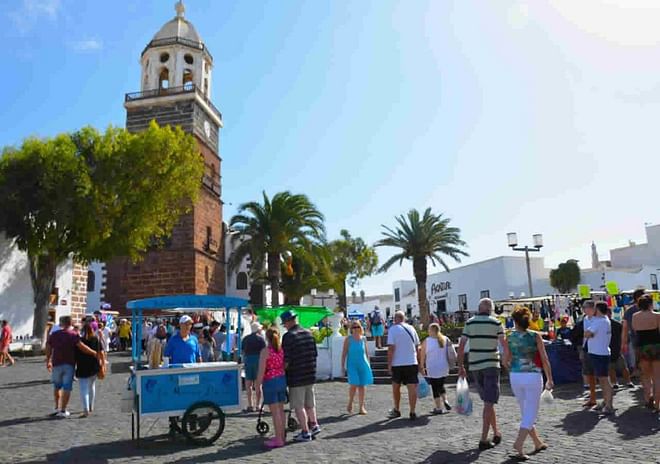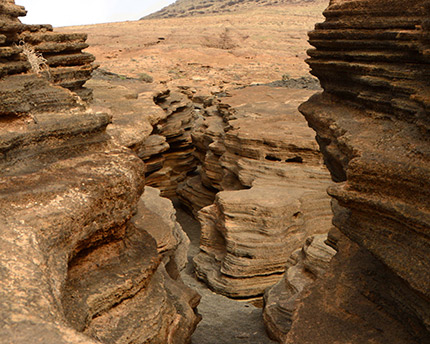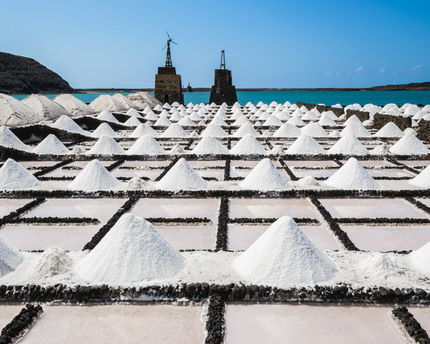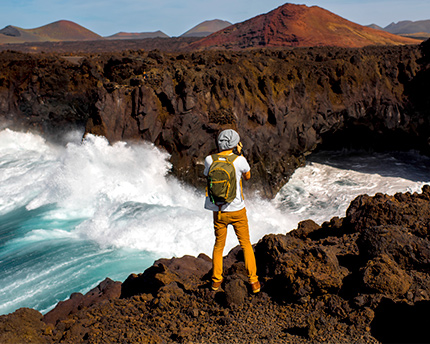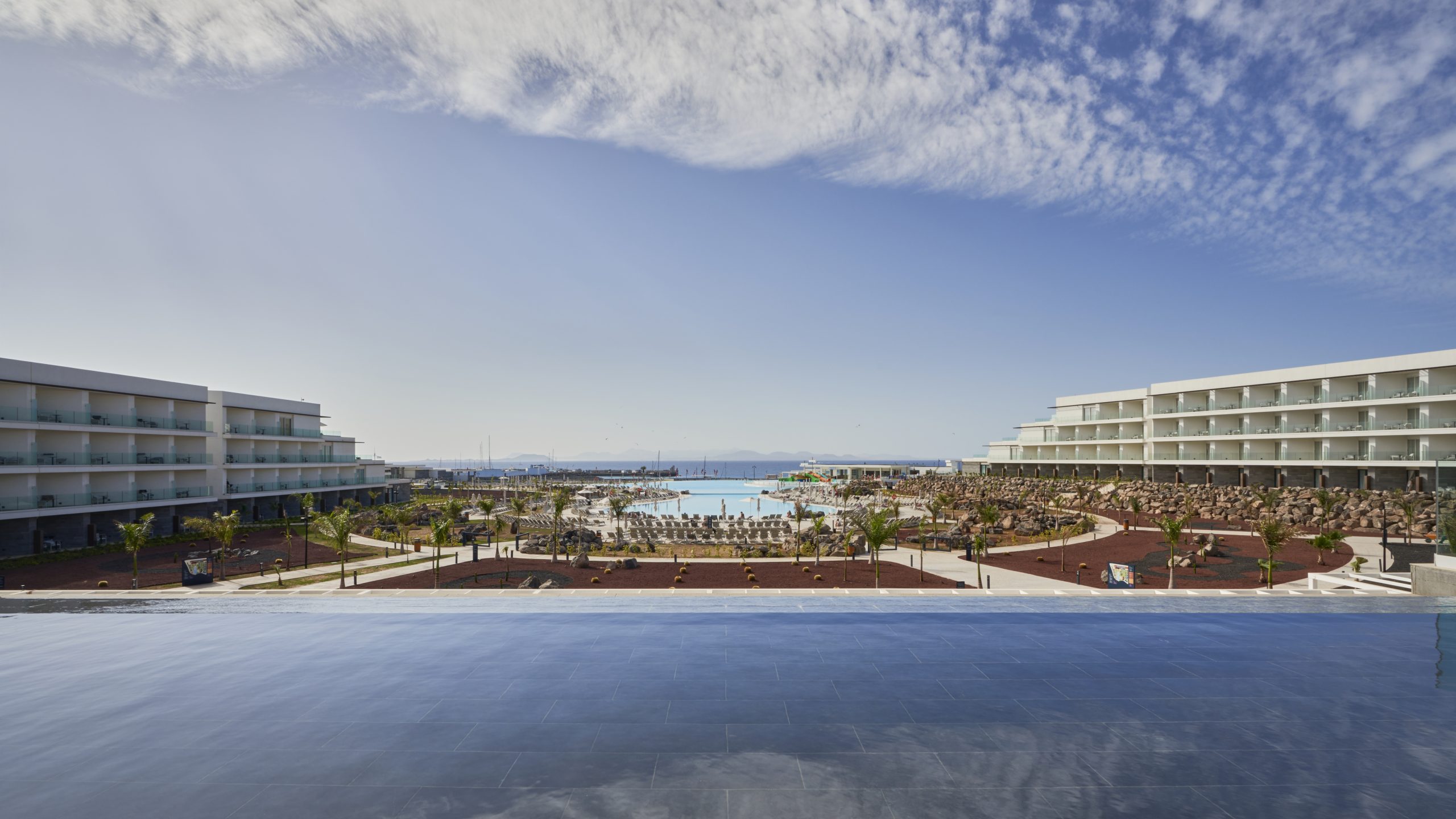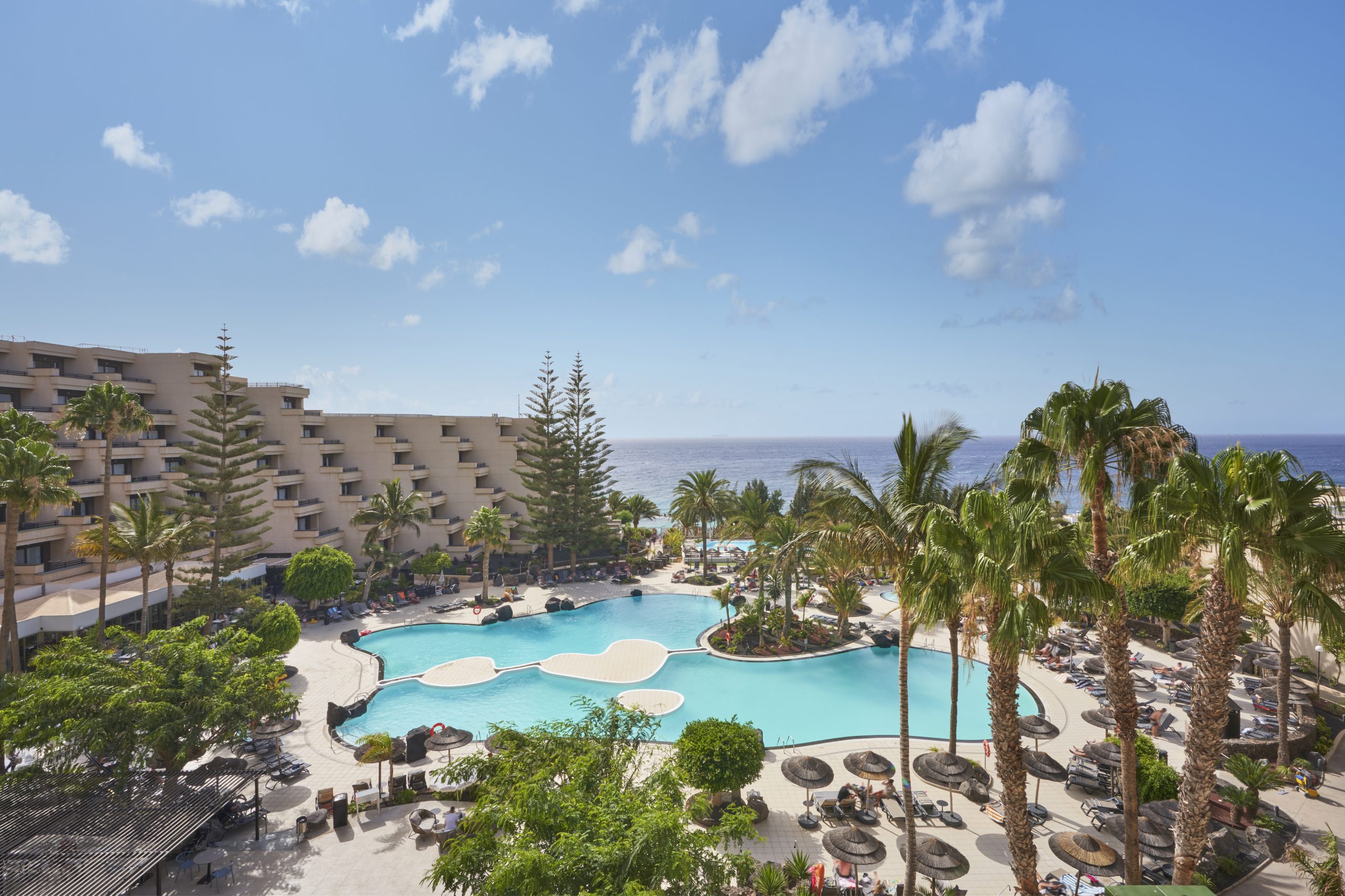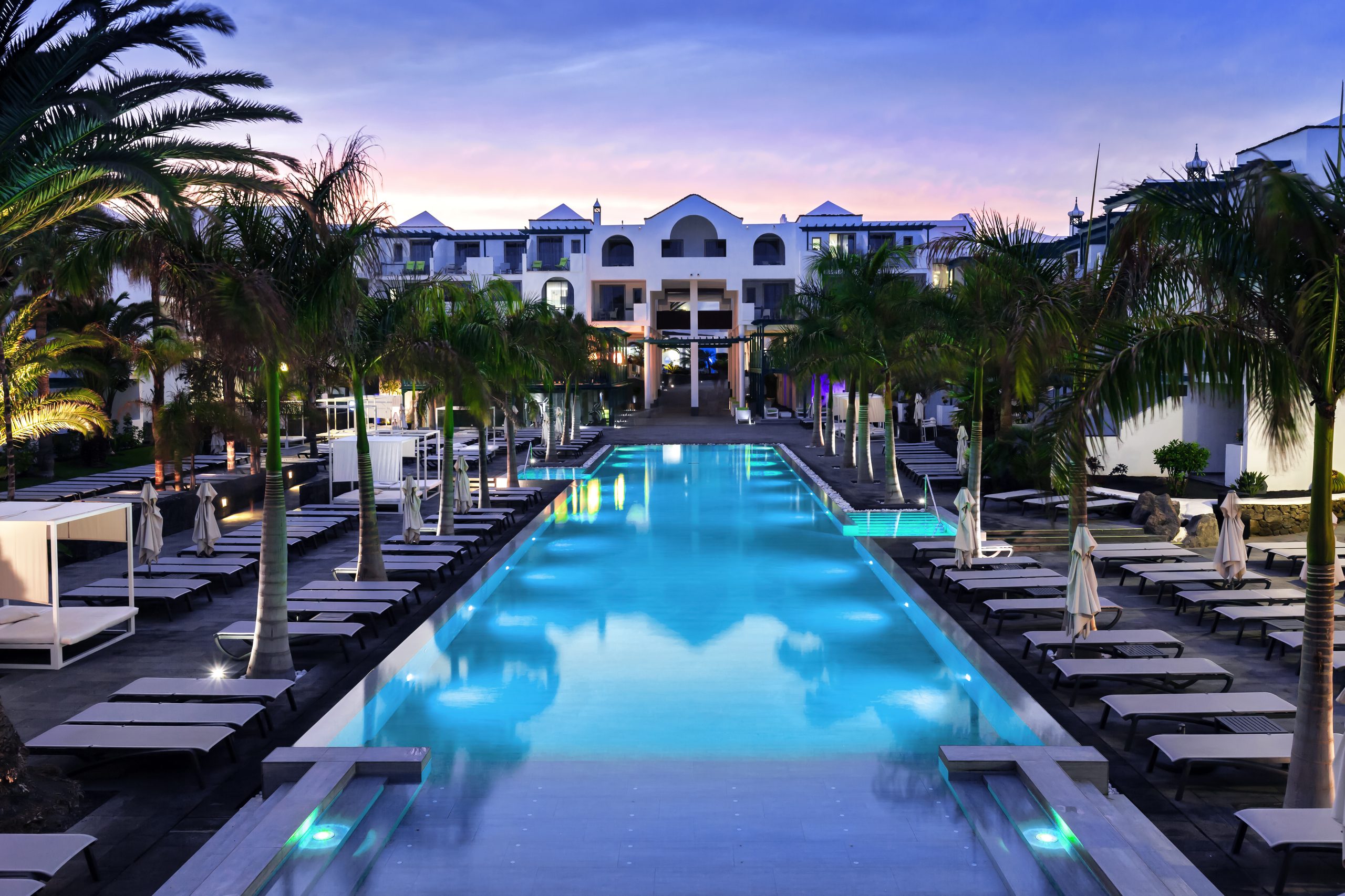Among a wealth of myths and legends, the Cueva de los Verdes appears to the visitor as a unique theatrical scene where the shifting shapes created by the lava put on their finest performance. This cave, formed after the eruption of the Corona Volcano over 4,000 years ago, is one of the visits not to be missed on Lanzarote. Like the Jameos del Agua it forms part of a system of underground volcanic tunnels created by the lava as it flowed towards the sea.
The formation of the Cueva de los Verdes (as well as other hollows and galleries) can be explained by the coincidence of two phenomena: the flow of the wave of molten lava, and a surface that became petrified as it cooled. Inside this impromptu tunnel, hollow spaces were created, which burst when they were inflated by gas. This particular underground channel begins at the crater and runs for 6 kilometres until it reaches the ocean, and then continues for a further kilometre and a half. This last stretch has become known as the Túnel de la Atlántida.
Before it became a tourist attraction, this cave, located in the district of Haría, was used in the sixteenth and seventeenth centuries as a hiding place during attacks by pirates from North Africa. It was only a century later that their geological importance was realised, and scientists and European intellectuals began to visit them, fascinated by such an extraordinary volcanic formation. According to tradition, the cave acquired the name ‘los Verdes’ from the local family who used to keep their livestock inside it. It started to become a tourist attraction for visitors to Lanzarote in 1964, when two kilometres of it were made accessible. From then onwards, it became part of the network of Lanzarote Island Council’s Centres of Art, Culture and Tourism—just like *Timanfaya (or the Montañas de Fuego), the Jameos del Agua, the Jardín de Cactus and the Mirador del Río.
Related experiences
A sanctuary of nature
The present-day appearance of the Cueva de los Verdes is the work of the artist Jesús Soto who, in the 1960s, was commissioned by the Lanzarote Island Council to make this volcanic wonder fit to receive visitors. Soto, who also collaborated with César Manrique, applied his expert knowledge of light and shade to different spaces with the aim of making the stone stand out, highlighting the curious shapes left by the lava after the eruption. The shades of red, grey, black and ochre appear to play with the light, creating strange colour effects.
Visitors are generally surprised by the system of overlapping and vertically connected galleries, and by their height—some spaces are up to 50 metres high and 15 metres wide. The Cueva is a pleasant place to visit, thanks to its stable temperature (around 19 oC) and to the quirky anecdotes told by the guides, who point out the most odd-looking stony structures, formations such as lava stalactites, and marks that show the levels reached by the river of fire. Among the highlights are the Auditorio [Auditorium], the Sala de las Estetas [Hall of the Aesthetes], Garganta de la Muerte [Throat of Death], and the Puerta Mora [Moorish doorway].
Other amazing sights in Lanzarote
Volcanology enthusiasts will also enjoy a visit to the Jameos del Agua, a splendid work by César Manrique on another section of the same tunnel of the Cueva de los Verdes. Both are perfect outings during a family holiday on Lanzarote, although you will need to take certain precautions—and, in the case of small children, take a baby sling because strollers are not allowed.
Another magnificent work by Manrique, with assistance from the architect Eduardo Cáceres and the artist Jesús Soto, is the Mirador del Río, which commands an impressive panoramic view of La Graciosa, the eighth Canary Island, and the Chinijo archipelago. Situated on the Risco de Famara, at a height of 400 metres, the setting of the Mirador is intriguing, as its main building is covered by volcanic rock.
The Montañas de Fuego are another attraction worth visiting on Lanzarote. The desolate view, the undulating land and the reddish hue (the result of a series of volcanic eruptions) that dominates the Timanfaya National Park, brings to mind planets such as Mars. This is a trip especially suitable for couples, groups of friends or families: the tours are mostly undertaken by bus or on dromedaries, and involve only short stretches on foot.
César Manrique’s is the Jardín de Cactus [Cactus Garden], where visitors can see 4,500 examples of 450 species from the five continents.






































































